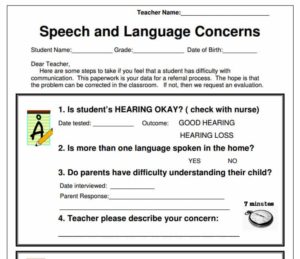Hey everyone! Ever received a child who speaks two or more languages, people can’t understand him, and you have to decide which artic sounds to focus on?
Choose the right artic sounds, and the child becomes more intelligible.
Choose the wrong goals, and you become an ESL teacher focusing on sound differences caused by second-language influence.
Take a walk with me through this conversation I had with a very bright-minded SLP. My responses are embedded after each of her questions.
Hi Scott,
I have been working with students who speak Spanish, Somali, and Karen(ni) this year and have been trying to identify students appropriately for speech-language intervention.

However, I have had some questions come up regarding identification and treatment for articulation of speech sounds. For example, in Karenni, the /g/ and /s/ phonemes do not exist. Further, all of their syllables are open (ending in vowels). We have a kindergartner who does not put final sounds on words and does not produce /s/. I have held off on identifying him because of his first language.
Articulation disorders indicate a mechanical inability to produce an artic sound. If a student is typical, and just a non-English speaker, he should be able to produce the sound or imitate you upon request. There are some cases where this is not true (R to L are challenging for speakers of many Asian languages) but for the most part we can easily imitate each other. Or, you should be able to teach this sound in a single session. This doesn’t mean he will use it correctly all the time, but he should be able to imitate the sound. A quick way to figure it out is to bring him and 1-2 language matched peers into a group and have them imitate sounds. Start with fun sounds (Mr. Brown Can Moo, Can You?) and slip in the ones that you are after.
Scott
The concern I have is that his ELA teacher tells me that other kids with a similar language background and similar length of time learning English are able to produce/imitate sounds and words (e.g. “dog,” “hands”). Also, the classroom teacher who previously had an older sibling reported that the older sibling did not have the trouble speaking that this student does.

At what point can I justify evaluating/qualifying/treating him? And what “evidence” do I use?
Not sure what referral process you use in your school, but RTI tier 3 enables us to get signed permission from the parent to work with the child. Work with him as stated above or bring him into one of your existing groups and do some informal assessment. Typically, I have found that it is pretty black and white. He either has no experience and you can teach the sound quickly or it is a true disorder.
We don’t seem to use the RTI process for speech/language in my district (although I am new to this district and I could be wrong; however, when I worked in a nearby district I didn’t see any evidence of the RTI process for speech/language in two schools I was in there, either). We are not allowed to screen a child unless we screen EVERY child at that grade level; to do so would be evaluating without consent. It’s kind of a catch-22–how do I get to listen to a child’s speech and language to compare it to that of his peers if I can’t screen…but how do I know if a referral is appropriate and should go to evaluation without being able to screen? It’s tough.
It is my opinion that screening and universal screenings are not a great idea. We risk overrepresentation of students in special education programs because there is bias in assessment tools. Also, we know that young children have little test-taking experience and may not perform well because of that. Lean on your teachers to provide you with the best (useful!!) data.
- Check out the 4 page Speech Language Referral Documents page.
- Have the teacher work with two kids, this one and one and another one from his language background. Teach her how to request an artic sound ike /s/. You can sit behind her and listen and tutor her as she goes along. Also get her opinion.
- Have the teacher grab a short recording of the two students saying a series of words. You can listen to it and share your thoughts on the differences between Student A and Student B. Collaborating with teachers like this helps them to improve their ability to know which kids to refer for evaluation and which ones not to refer.
Wow, thank you for your very thorough reply!






Maybe our Speakaboo app can help in some cases . It is an articulation screener in 19 Languages (19 different word lists with culturally appropriate pictures) with games to elicit words, Score forms , videos and info about the languages on the website Speakaboo. The app automatically records each reply of the child per item, and it is possible to compare the result to a native speaker’s ‘interpreter ‘ pronunciation.The app can be found on tablets, and Android phones , free of charge in the AppStore. Not on iPhone. on android phones it is very small , tablet is better.
Scott, you are awesome! Thanks for making this post!! Right now the only second language kiddos I’ve seen have been Spanish speaking. I’m glad to have a resource for when the time comes that this isn’t the case. Also, I am looking forward to diff/disorder #2!! Thank you guys for all that you do!
Hi Angela, Sometimes it’s easier just to “hear” the answer through a conversation. I wrote another similar post that will come out the following Thursday. Thank you for your comment and glad we are on the right track.